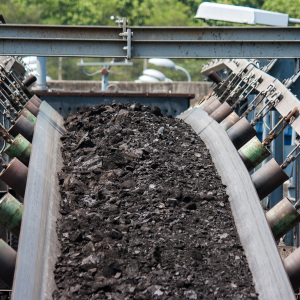Every Saturday night
I felt the fever grow
Do ya know what it’s like
All revved up with no place to go – Meatloaf (1977)
This should be a time of great joy and optimism in the CCS community. Last October, the world’s first commercial-scale carbon capture and storage (CCS) coal-fired power plant came online at Boundary Dam in Saskatchewan, Canada. CCS was front and center in the Intergovernmental Panel on Climate Change Fifth Assessment Report. In its roadmap for mitigating climate change, the international energy agency repeatedly said CCS is a key technology.
Yet the reality is CCS is at a crossroads and its role in a carbon mitigation portfolio is very uncertain.
In the immortal words of Meatloaf, we are “all revved up with no place to go.”
To understand how we arrived at this crossroads, we need to review the history of CCS. Significant research programs in CCS were initiated in the early 1990s, around the time the United Nations Framework Convention on Climate Change was drafted at the Earth Summit in Rio de Janeiro. This timing was not a coincidence as there is a strong relationship between technology and policy development that is critical to the future of CCS and understanding why we are at a crossroads today.
From the 1990s to about 2009, there was great growth in CCS. Statoil’s Sleipner project in the North Sea off Norway, the world’s first large-scale CCSplant, demonstrated that CCS was a commercial reality. Over the next decade, CCS saw explosive growth, as measured by the size of research budgets, number of papers published, and number of pilot and demonstration projects.
CCS was flying high in 2009. President Obama was just elected, and there was immense optimism that the Congress would pass cap-and-trade legislation and that the Conference of the Parties to the United Nations Framework Convention on Climate Change meeting in Copenhagen would produce a new international agreement to supersede the Kyoto Protocol.
In the United States, the CCS research, development & deployment budgets were effectively tripled for the next seven years with the injection of $3.4 billion of stimulus funds. In Europe, the NER300 program was established to incentivize up to a dozen CCS demonstration projects to come online by 2015.
Things did not turn out as planned. In the United States, instead of cap-and-trade legislation, we now have snowballs in the Senate. Copenhagen was a failure. The NER300 program produced zero demonstration projects, while the United States saw the cancellation of FutureGen, its largest and most visible demonstration project.
The news was not all bad. In addition to Boundary Dam, CCS projects at a refinery and an ethanol plant are operational. Two additional CCS power plant projects, Kemper and Petra Nova, are under construction, and a third, the Texas Clean Energy Project, may follow.
The number-one reason for CCS not meeting the expectations of 2009 has been the lack of market development. Because it is always cheaper to emit carbon dioxide into the atmosphere than to capture and store it, markets will evolve only if climate policy is put in place that forces reduction of atmospheric carbon emissions.
Even with limited “market pull” from climate policy, CCS can keep moving forward if there is appropriate “technology push.” This can be accomplished through energy technology programs that bridge the gap between the current costs of CCS and the price the market can afford to pay today.
Study after study has shown that without CCS, the costs of meeting stabilization targets are greatly increased. These results are not surprising because of the inherent strengths of CCS. It produces dispatchable power, as opposed to intermittent power from wind and solar. It provides the major pathway to negative emissions when combined with biomass-fired power plants. Finally, it is the only mitigation technology that can rescue potentially hundreds of trillions of dollars of stranded fossil assets.
In summary, CCS is a critical technology if we want to meet long-term climate goals. Eventually, CCS needs to be driven by climate policy and the resulting climate markets. In order to keep moving CCS forward today, stronger “technology push” programs are needed. These programs have been successfully applied to renewables. If similar efforts are applied to CCS, the results would be even more successful.

